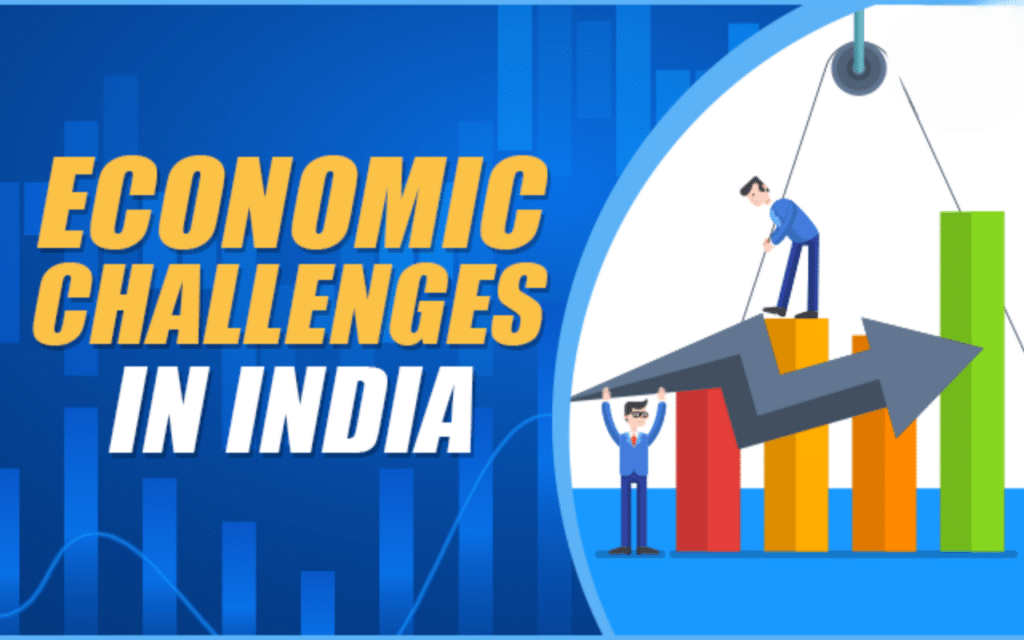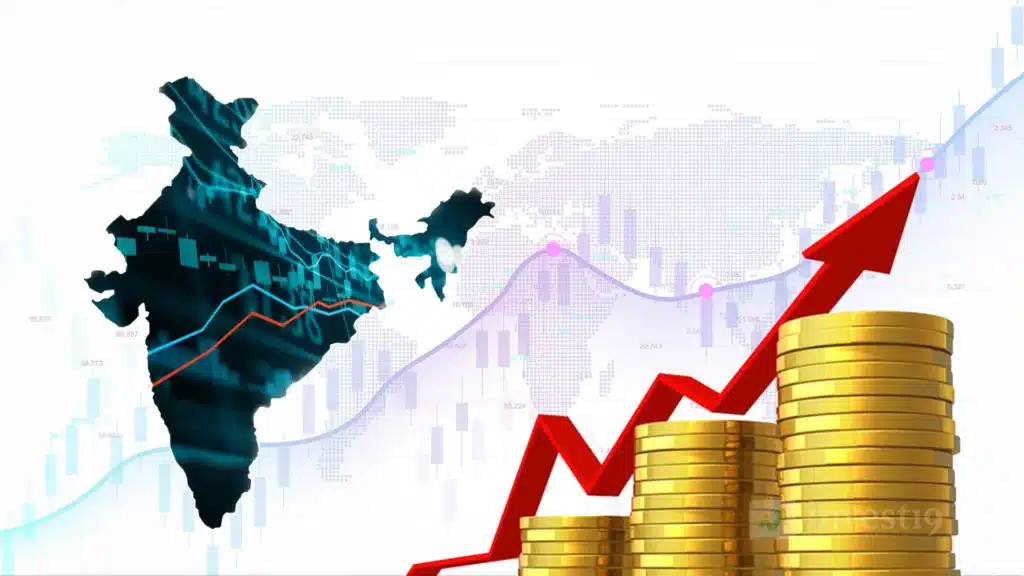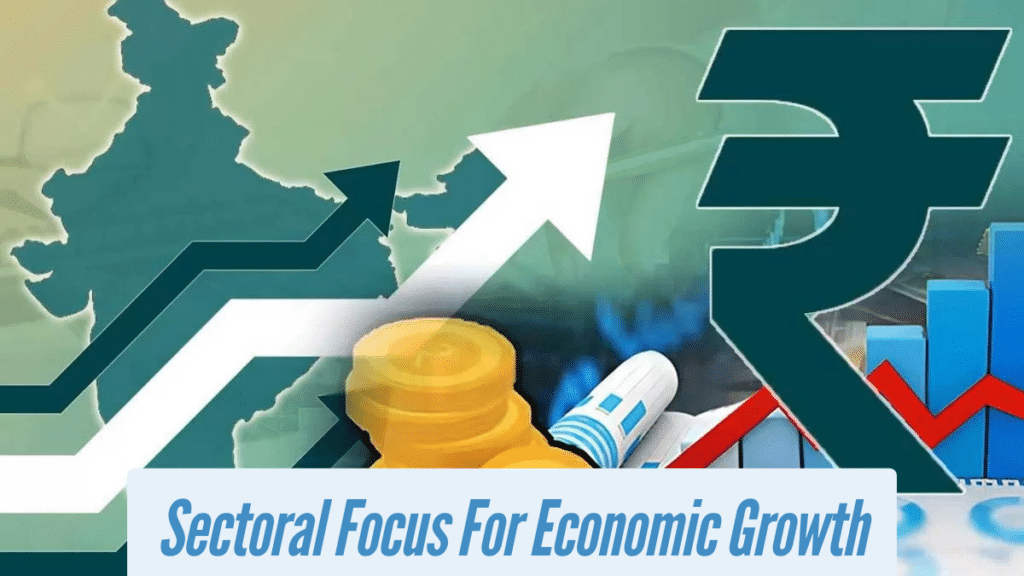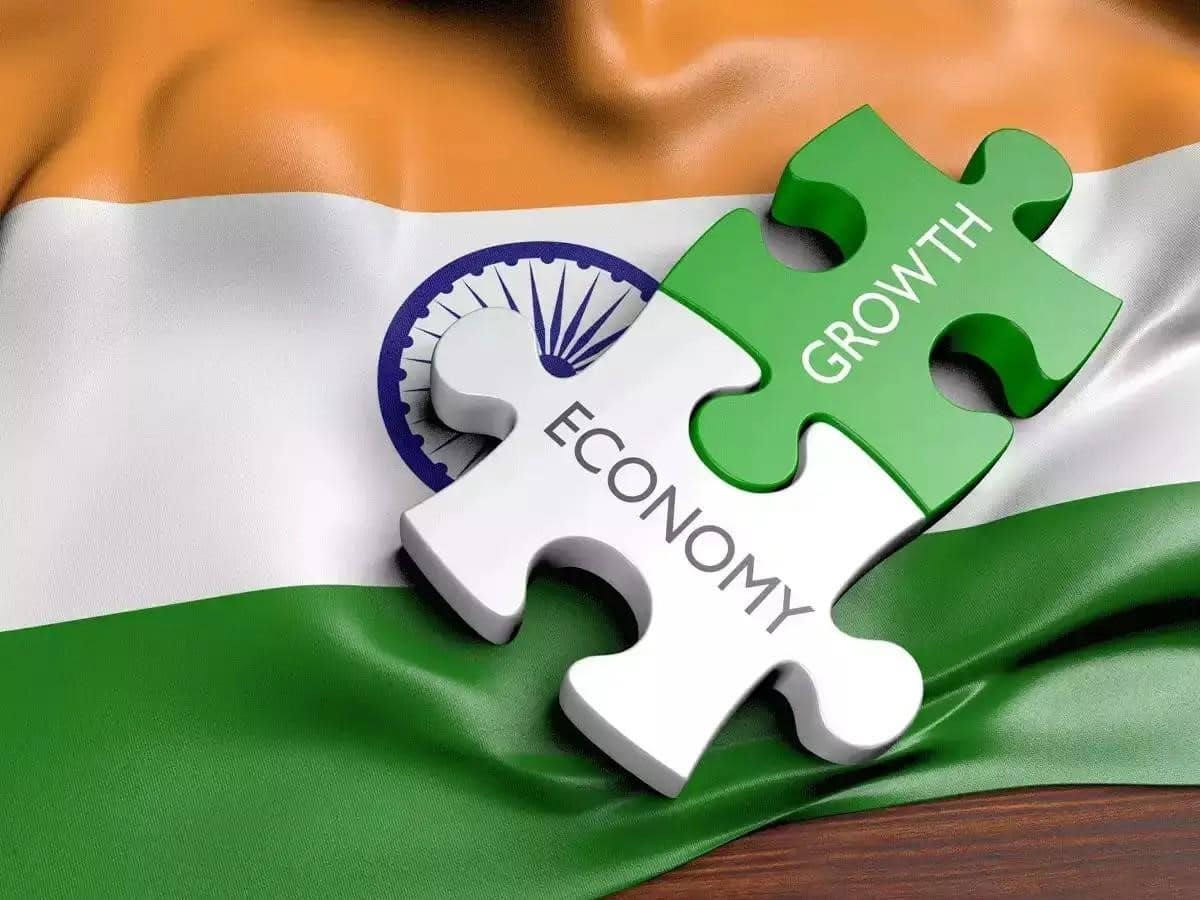As the fifth-largest economy globally, India is poised for an economic transformation in 2025. The nation’s dynamic landscape is shaped by advancements in technology, shifts in global geopolitics, demographic changes, and domestic policy initiatives. While remarkable progress has been achieved in recent years, significant hurdles such as unemployment, infrastructure gaps, fiscal deficits, and global uncertainties continue to challenge sustained growth.
This article explores India’s key economic challenges in 2025 and outlines strategic reforms to foster sustainable growth and resilience.
Key Economic Challenges

1. Unemployment
India, with its vast workforce, struggles with persistent unemployment:
- Skill Gaps: Many workers lack the skills required for emerging sectors like AI, renewable energy, and advanced manufacturing.
- Youth Unemployment: A significant portion of educated youth remains jobless due to insufficient opportunities in the formal economy.
2. Slow Industrial Growth
The manufacturing sector, vital for economic aspirations, faces setbacks:
- Underwhelming Make in India Progress: Key initiatives have yet to deliver intended results.
- Import Reliance: Dependence on foreign raw materials and technology weakens domestic industries.
- Regulatory Challenges: Bureaucratic hurdles impede business efficiency.
3. Agricultural Stagnation
The agriculture sector is hindered by:
- Fragmented Land Holdings: Inefficient production practices due to small, divided plots.
- Climate Change: Erratic monsoons and temperature increases disrupt farming.
- Market Inefficiencies: Farmers face income instability due to poor access to markets and price volatility.
4. Infrastructure Deficits
India’s infrastructure struggles to meet growing demands:
- Overburdened Transport Systems: Logistics inefficiencies slow industrial and trade growth.
- Energy Supply Gaps: Inconsistent access to power hampers productivity.
- Urban Challenges: Rapid urbanization strains city infrastructure.
5. Fiscal Constraints
India’s fiscal challenges include:
- Subsidy Burden: High spending on subsidies impacts public investment capacity.
- Low Tax Revenue: Inefficient tax systems result in a low tax-to-GDP ratio.
- Growing Public Debt: Economic pressures add to fiscal strain.
6. Global Economic Uncertainty
Global factors influencing India’s economy include:
- Geopolitical Tensions: Trade disputes and conflicts disrupt exports and investments.
- Currency Fluctuations: Volatility impacts foreign trade and reserves.
- Slow Growth in Major Economies: Economic slowdowns in key markets like the EU and China affect India’s trade.
Proposed Reforms for Sustained Growth

1. Job Creation and Skill Development
- Future-Ready Skills: Launch programs focused on AI, machine learning, green energy, and advanced manufacturing.
- Boost Entrepreneurship: Offer seed funding, tax breaks, and mentoring for startups.
- Formalize Informal Work: Incentivize businesses to transition informal jobs into the formal economy.
2. Industrial Growth Revival
- Make in India 2.0: Focus on sectors like electronics, textiles, and automobiles through subsidies and economic zones.
- Technology Adoption: Encourage businesses to modernize operations via financial incentives and international collaborations.
- Simplify Regulations: Digitize compliance processes to reduce bureaucratic delays.
3. Agricultural Reforms
- Sustainable Practices: Promote organic farming, efficient irrigation, and renewable energy in agriculture.
- Market Access: Develop digital platforms and Farmer Producer Organizations (FPOs) to improve pricing and reach.
- Climate-Resilient Farming: Invest in insurance schemes and climate-adaptive crops.
4. Infrastructure Modernization
- Smart Cities Initiative: Prioritize urban development with investments in public transport, waste management, and digital services.
- Renewable Energy: Scale up solar, wind, and other green energy projects.
- Transport Networks: Upgrade highways, railways, and ports to optimize logistics and supply chains.
5. Fiscal Reforms
- Expand Tax Base: Simplify tax systems to encourage compliance and broaden revenue streams.
- Subsidy Redirection: Gradually reduce subsidies, reallocating funds to development projects.
- Public-Private Partnerships (PPPs): Leverage private investment for infrastructure and social programs.
6. Global Trade and Diplomacy
- Diversify Exports: Focus on emerging markets in Africa, Latin America, and Southeast Asia.
- Trade Agreements: Finalize pacts like RCEP to strengthen market access.
- Attract FDI: Create a stable, investor-friendly environment with simplified foreign investment policies.
Sectoral Focus for Economic Growth

1. Technology and Innovation
- Expand the Digital India initiative to ensure broadband connectivity across rural areas.
- Promote research and development (R&D) in emerging fields like biotechnology, space technology, and quantum computing.
2. Healthcare Sector
- Increase spending on public healthcare infrastructure and promote universal health insurance.
- Encourage private investments in pharmaceuticals, medical devices, and telemedicine.
3. Education and Human Capital
- Overhaul the education system to focus on STEM education, vocational training, and digital literacy.
- Introduce collaborative programs between Indian universities and global institutions for skill enhancement.
4. Tourism and Hospitality
- Develop ecotourism and cultural tourism to attract global visitors.
- Simplify visa processes and promote India as a year-round travel destination.
India’s Economic Vision for 2030
Looking beyond 2025, India aspires to achieve the following milestones by 2030:
- $10 Trillion Economy: Doubling its GDP with robust contributions from manufacturing and services sectors.
- Energy Independence: Becoming a global leader in renewable energy production.
- Global Export Hub: Transforming into a hub for high-value manufacturing and tech-driven exports.
- Inclusive Development: Ensuring equitable access to education, healthcare, and financial services.


